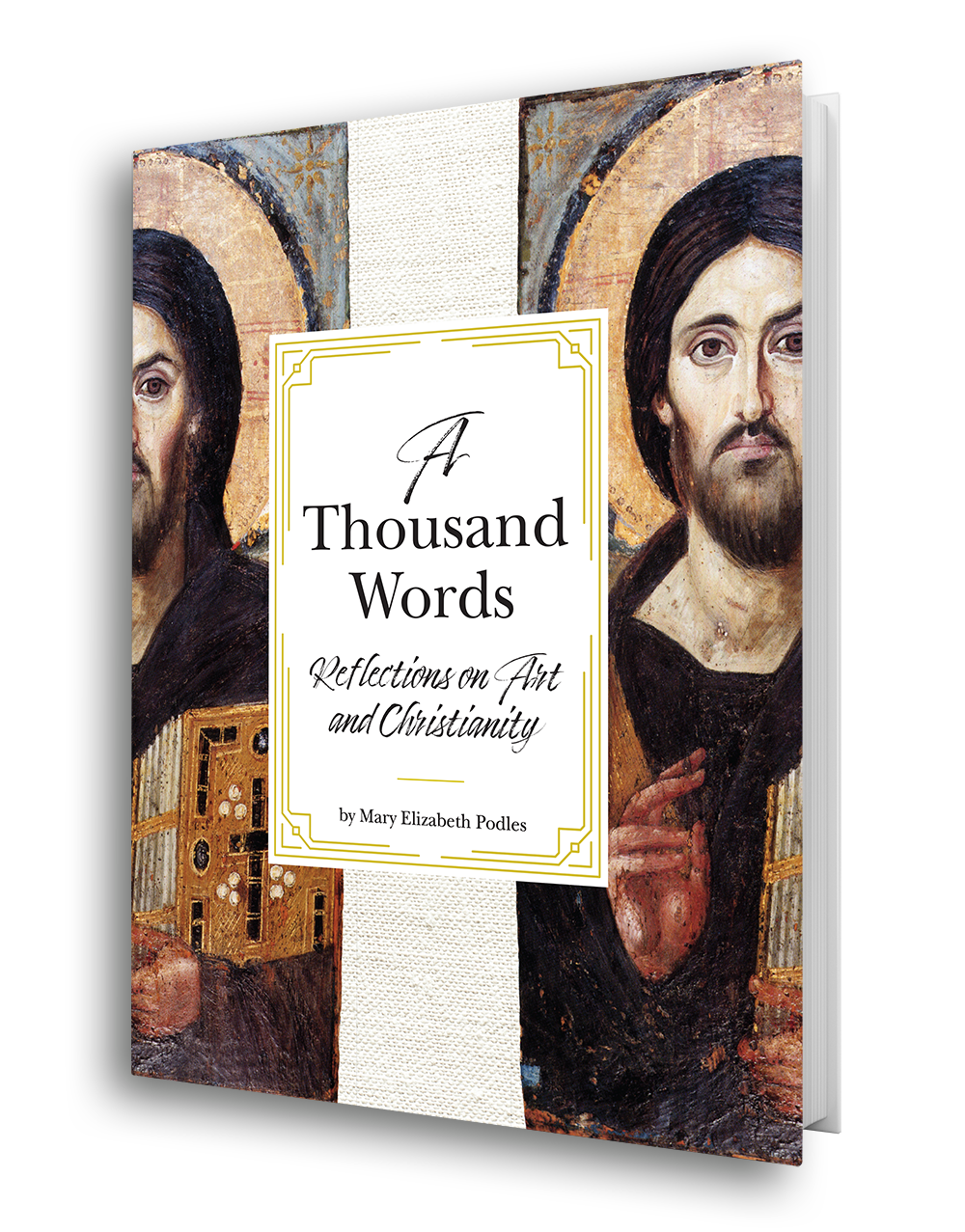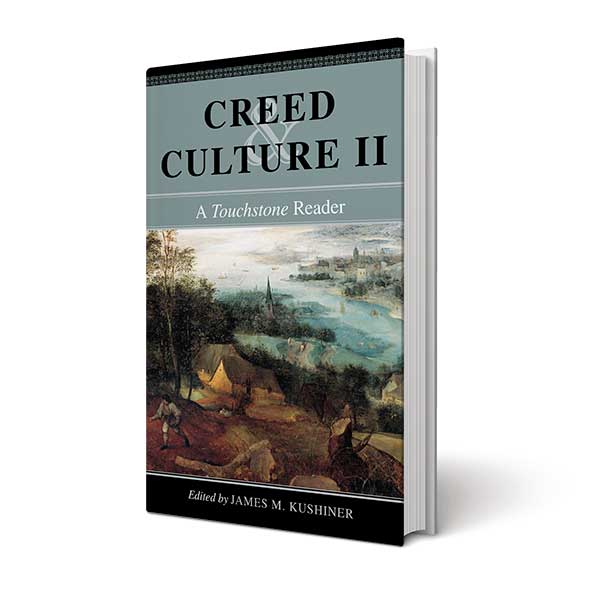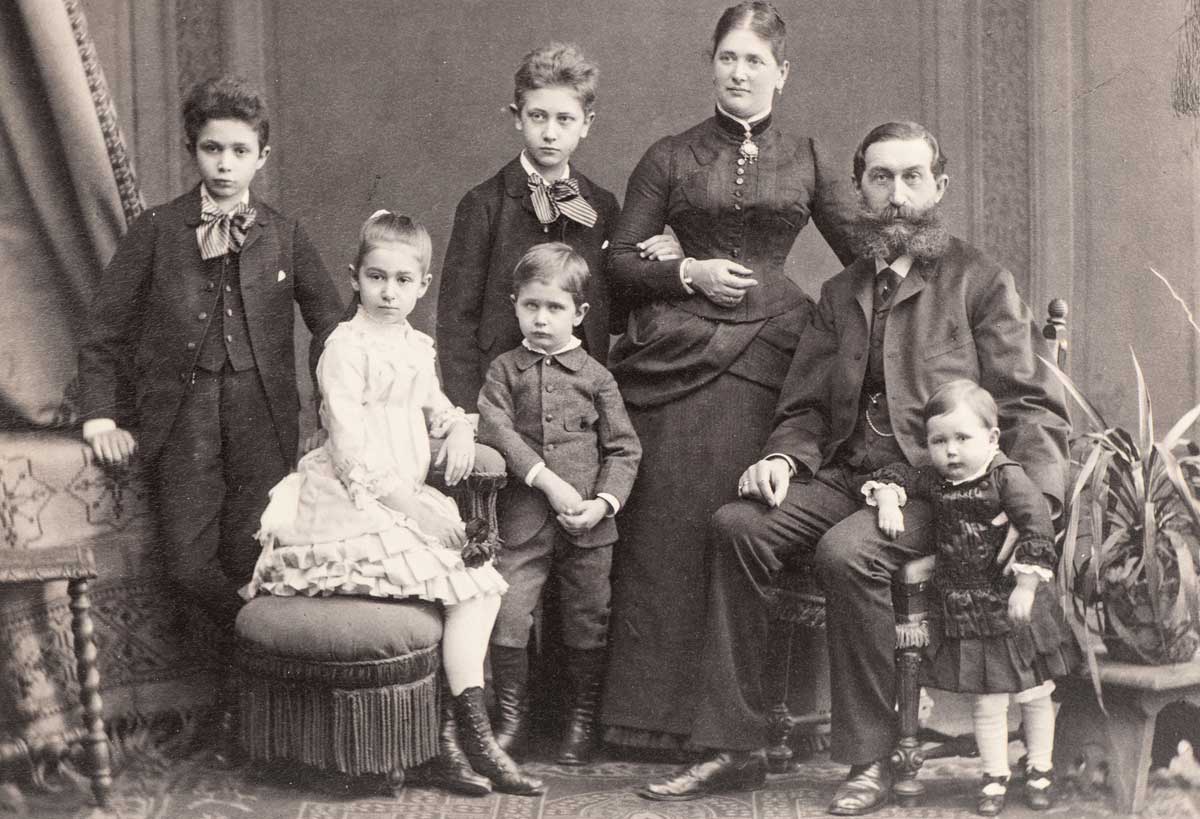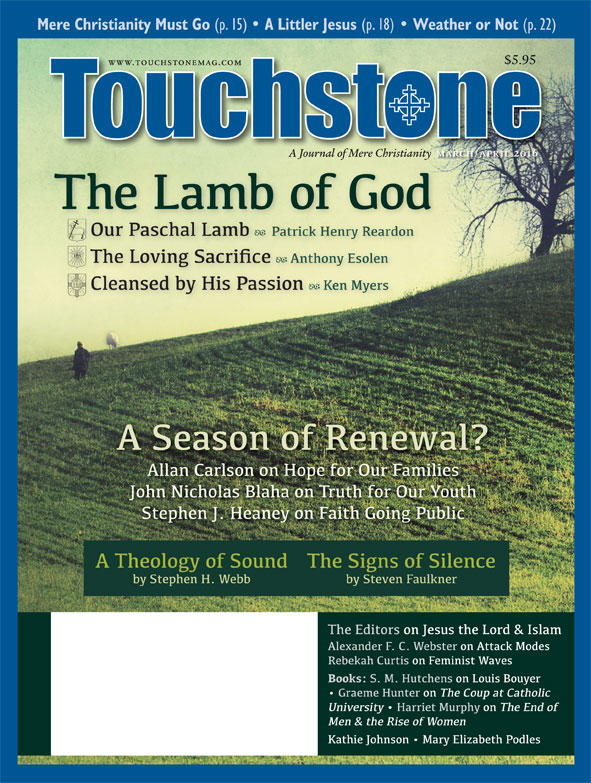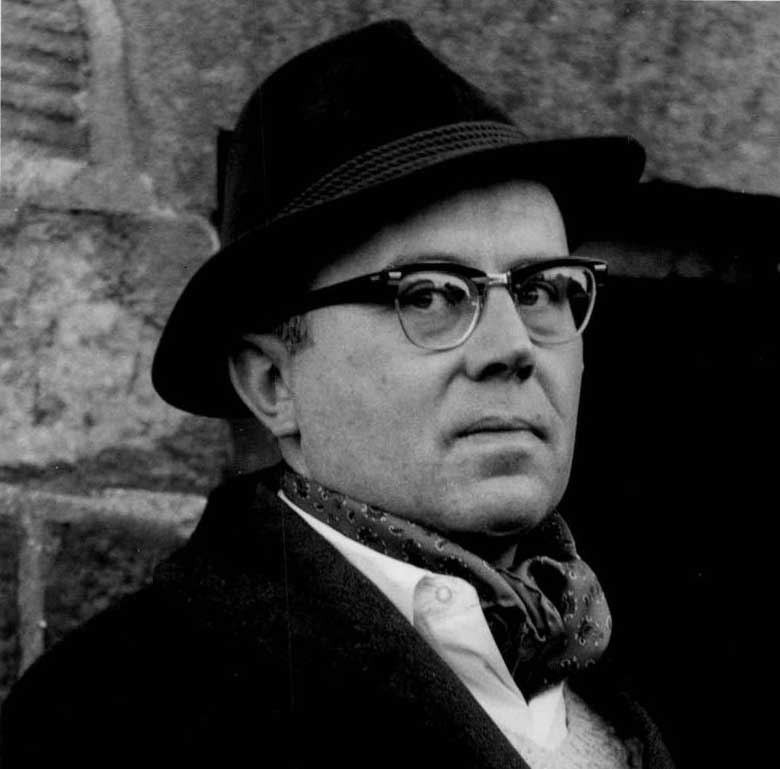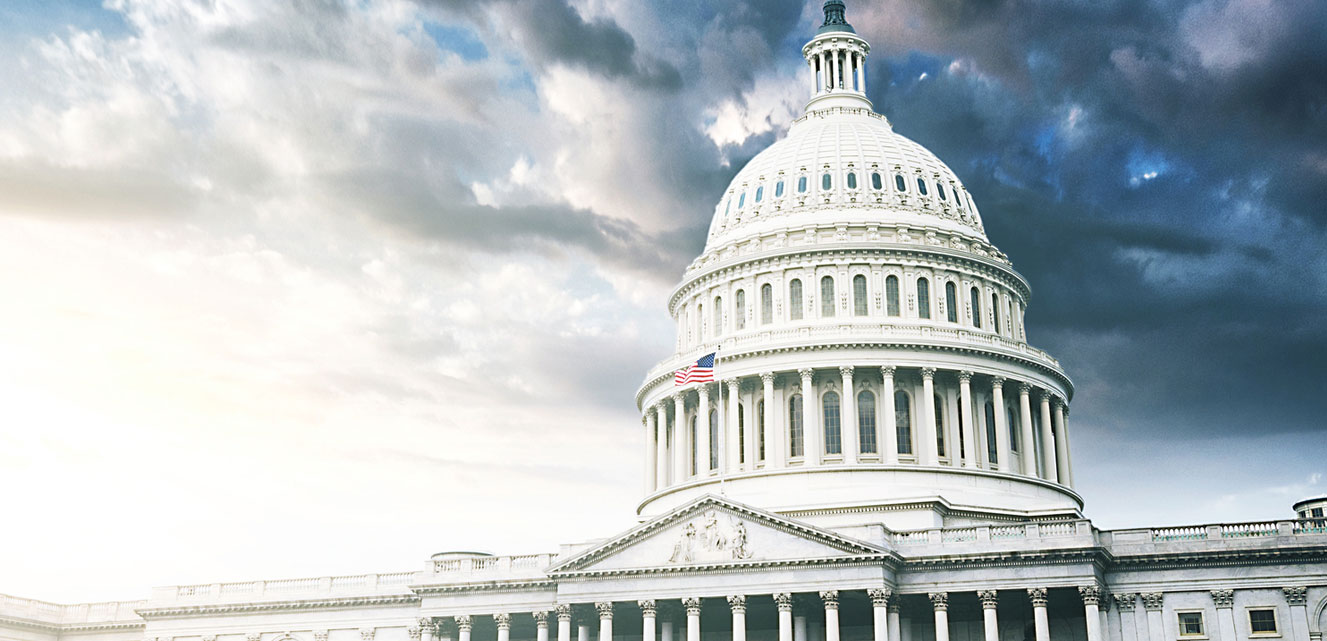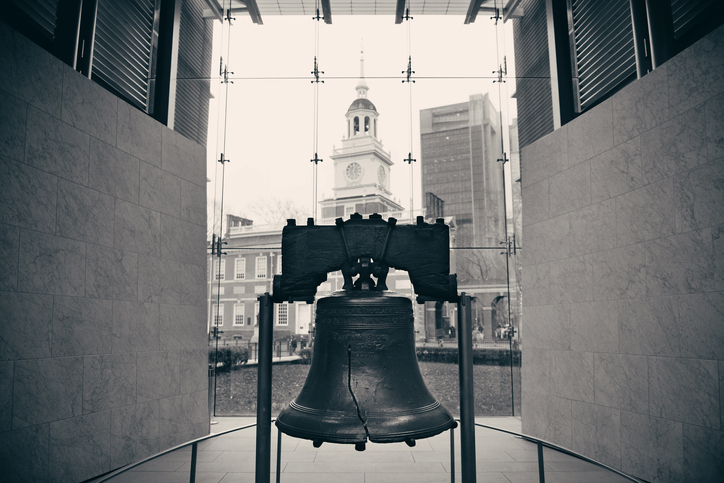Feature
Family Phases
The History of Family Strength in America May Reveal Good News
There are three ways in which historians have tried to make sense out of the history of the family in America. The oldest of these is the liberal interpretation. First offered in Henry Sumner Maine's mid-nineteenth-century book, Ancient Law, this thesis holds that the change in all "progressive" societies—including the United States—is "from Status to Contract." In pre-modern societies, rulers or legislators only reached to the heads of families. These patriarchal males then governed the women, children, and servants within their domestic domain. The status of each person—male or female, parent or child, free or servant—was fixed by custom and law. Political entities were composed of patriarchal households, not of individuals.
However, Maine argues, the "sphere of civil law, small at first, tends steadily to enlarge itself." Along the way, ever more personal rights and ever greater amounts of property are removed from exclusive domestic control and brought to the attention of public tribunals. This movement features "the gradual dissolution of family dependency and the growth of individual obligation in its place. The individual is steadily substituted for the Family, as the unit of which civil laws take account." The family, as such, is left with ever diminished authority and ever fewer enforceable claims, and so keeps moving toward extinction.

The Marxist Interpretation
The second theory of historical interpretation is Marxist. Loosely inspired by the ideas of Karl Marx and Friedrich Engels (especially Engels's 1884 book, The Origin of the Family, Private Property and the State), Arthur W. Calhoun produced the first comprehensive history of the family in America in 1917. His three-volume work, A Social History of the American Family: From Colonial Times to the Present, emphasizes "the economic factor" pushing social change. Putting it another way, he says that the "form and texture" of family relations "depend primarily on the evolution of economic technique." As an example, Calhoun cites American family life in the early twentieth century, which he sees as being shaped by "the growth of the larger capitalism." The "real basis" of then-evident family woes, he argues, derives from "the pathology of capitalism."
Calhoun, like Maine, portrays the history of the family as moving, or "evolving," in a distinct direction. In Calhoun's interpretation, "society is working toward Socialism," which, he argues, would actually deliver "the regeneration of the family." However, the "meaning and spirit of Socialism" would require a radically new set of family values, including: "absolute sex equality"; the "scientific [teaching] of sex relations"; "a thoroughgoing eugenics enforced at the outset by legislation"; "limitation of the size of family"; and easy divorce when deemed best for all concerned.
Since technological innovation in the economy would never end, Calhoun emphasized that the evolution of the family would also never come to a rest. And since "in the light of social evolution, nothing is right or valuable in itself," he anticipated that "there will ultimately be as many types of sex commerce as there are of individual taste." Indeed, Calhoun predicted in 1919 the return of legal polygamy in his new family order; and, if he could have imagined it, so-called same-sex marriage would also surely have won his approval: it's all a matter of "taste."
A Third One-Directional View
A third school of historical interpretation has emerged in the early years of the twenty-first century. It draws on both liberal and Marxist themes while bringing in other philosophical strands: the emotionalism of Jean-Jacques Rousseau; the crafting of a personal moral code, as advanced by Friedrich Nietzsche; and the sexual enthusiasm of Havelock Ellis. Two of its representative authors, who focus on the "love revolution," are American historians Nancy Cott (Public Vows: A History of Marriage and the Nation, 2000) and Stephanie Coontz (Marriage, a History: From Obedience to Intimacy or How Love Conquered Marriage, 2005). Their view of historical evolution sees the family moving from an institution focused primarily on the procreation of children and the preservation of family property toward a flexible lifestyle choice involving no prescribed roles. Such choices turn marriage into "a personal and private relationship that should fulfill" each individual's "emotional and sexual desires."
This transition has meant the rejection of any particular marriage model, most certainly the Christian one. Similarly, it has rejected all appeals to "nature" or to a "natural" family order. Most tellingly, it has denied the procreation of children as a defining, or even important, feature of marriage.
More specifically, Cott argues that historical evolution is bringing new understandings to the categories of "husband" and "wife." Instead of being a rigid institution, marriage is being turned into the final destination of a love match. Freedom and private choices are enhancing, rather than damaging, marriage and family. This is why, she claims, the push for same-sex marriage has actually renewed the honor attached to conjugal bonds.
Coontz brings a determinism to this historical argument every bit as strong as that of the liberals or the Marxists. She acknowledges that the "marriage revolution" which she chronicles has produced considerable strife and turmoil in many private lives, on a scale rivaling the disruptions of the industrial revolution. However, she adds, such has been the cost as "thousands of years of tradition came to an end."
Notably, the interpretation of history advanced by Cott and Coontz has figured decisively in recent state and federal court decisions favoring same-sex marriage.
A Fourth Interpretation: Cycles of Strength & Weakness
My forthcoming book, Family Cycles: Strength, Decline & Renewal in American Domestic Life, 1630–2000 (due from Trans-action Publishers in May 2016), presents the case for an alternate or fourth—and a better and more accurate—historical interpretation of the family in America. Rather than finding change occurring over time in only one direction, I have identified four distinct cycles in this pageant. These cycles show periods of a "strengthening" or a "weakening" of American family systems around a single, normative model.
This distinctly "American" family model involves early and nearly universal marriage, high fertility, close attention to parental responsibilities, complementary gender roles, flexible but real intergenerational bonds, an aspiration toward family economic autonomy, and relative stability. Notably, such traits distinguish the American family system from the "European" model identified since 1700, which involves late marriage, a high proportion of the adult population never being married, and significantly lower fertility (see J. Hajnal, "European Marriage Patterns in Perspective," in Population in History: Essays in Historical Demography, 1965).
In periods when the "American" traits have been clearly dominant, I label the family system under scrutiny as "strong." When the opposite behaviors have appeared—foregone or delayed marriages, lower fertility and other signs of a retreat from childrearing, more divorce, loss of economic autonomy, and heightened intergenerational conflict—I label the system under study as "weak."
As my inquiry on this matter proceeded, I was surprised to discover that these cycles of strength and weakness occurred, until recently, in remarkably consistent fifty-year swings. Periods of strength can be found, give or take five years, from 1630 to 1680, from 1730 to 1780, from 1830 to 1880, and from 1930 to 1970. These episodes were separated by periods of decline from 1680 to 1730, from 1780 to 1830, and from 1880 to 1930, with another period of decline beginning about 1970. Viewed another way, I identify four family cycles of strength and decline since 1630, each of about one hundred years' duration. Turns within this cyclical narrative derive from intellectual, economic, cultural, and religious influences, with linkages to generational change.
Revolutionary-Era Baby Boom
Allow me to describe, albeit briefly, one such period of family renewal: that from 1730 to 1780, the decades leading up to and including the American Revolution.
Observers of colonial Americans in the mid-eighteenth century reported startling domestic realities. In 1748, for example, the Swedish Academy of Science sent Professor of "Oeconomy" Peter Kalm to visit the American middle colonies of Pennsylvania, New Jersey, and New York. Kalm found an astonishing social order. "As soon as a person is old enough," he reported, "he may marry in these provinces, without any fear of poverty." Good and uncultivated land was so abundant "that a new-married man can, without difficulty, get a spot of ground, where he may sufficiently subsist" with wife and offspring. Taxes were so low and "the liberties he enjoys so great" that "he considers himself as a prince in his possessions" (from Travels into North America, translated by John Reinhold Forster).
Even more remarkable were the swarms of children that Kalm reported. In Chester, Pennsylvania, a man named Richard Buttington gathered 115 living descendants in his home. In Trenton, New Jersey, meanwhile, the widow Sarah Furman died during Kalm's visit at age 97, leaving behind five children, 61 grandchildren, 182 great-grandchildren, and 12 great-great-grandchildren—260 living descendants in all. "In this manner," Kalm concluded, "the usual wish or blessing in our [Swedish Lutheran] liturgy, that the new-married couple may see their grandchildren till the third and fourth generation, has been literally fulfilled" in North America. Another mid-century Swedish visitor to the middle colonies, Israel Acrelius, noted that "marriage is quick" in the Delaware Valley, and so "more agreeable and more used" (A History of New Sweden, or The Settlements on the River Delaware, 1758).
In his 1754 report to the Duke of Würtenberg on German settlers in Pennsylvania, Gottlieb Mittelberger described similar wonders. Regarding size of the population, he wrote, "it must be confessed that the female sex in this new country is very fruitful." In both city and country, "when one comes into a house, one finds it usually full of children, and the city of Philadelphia is fairly swarming with them." Mittelberger added that whenever a visitor met an American woman, he would find that "she is either with child, or she carries a child in her arms, or leads one by the hand."
Still more curiously, a "baby boom" also seemed to be occurring among African-American slaves. In the British colonies of Barbados and Jamaica, the death rate among slaves was near-calamitous; relatively few native-born babies appeared, and still fewer survived into adulthood. Only the arrival of new "imports" from Africa sustained these slave-based economies in the eighteenth century. In Virginia, however, clergyman Hugh Jones reported as early as 1724 in The Present State of Virginia that the number of slaves increased not only "by fresh supplies from Africa and the West Indies," but also because "the Negroes . . . are very prolifick among themselves." Thirty-five years later, the English visitor Andrew Burnaby reported that "the number of Negroes" in the southern colonies was "nearly equal, if not superior" to that of whites, while "they propagate and increase faster" (Travels Through the Middle Settlements in North America in the Years 1759 and 1760).
Causes & Meaning
The American polymath Benjamin Franklin pondered the significance and causes of such developments. In his remarkable 1755 essay, Observations Concerning the Increase of Mankind, Peopling of Countries, &c., he calculated that American marriage and birth rates were twice as high as those of Europe. With an average of eight births per American marriage, compared to four in the Old Countries, he also calculated that "our people must at least be doubled every twenty years," based on native births alone.
Why the difference? Franklin argued that "people increase in proportion to the number of marriages," and that where and when "families can be easily supported, more persons marry, and earlier." In addition, Franklin argued that religious groups that regarded frugality and hard work as religious duties, "and educate their children therein," would "consequently increase more by natural generation" than groups that did not; it seems clear that he had in mind here the Quakers of the Delaware Valley.
Writing in 1775, Harvard University theologian Edward Wigglesworth hinted at developments and prospects divine. Through births alone, British Americans had doubled their numbers every 25 years since the founding of the first settlement: "A rapidity of population not to be paralleled in the annals of Europe!" he exclaimed. Indeed, such a thing "has never been equaled since the patriarchal ages."
Why? Wigglesworth argued that Americans "are less luxurious in their manner of living"; that they "marry earlier in life," which results in more children; that "their temperance in diet renders them more healthy"; and that "boundless tracts" of new land opened prospects for obtaining freehold farms, which enabled "every new-married couple" and their children to gain "by their industry . . . a comfortable support." Looking ahead, he estimated that Americans would "be more numerous than their brethren in Britain" in a mere fifty years.
Indeed, something very remarkable was occurring in mid-eighteenth-century America. As I interpret the historical records and statistics, it seems clear that the middle decades of the eighteenth century were witness to a new cycle in American family life, another episode characterized by a culture of marriage, a low age for first marriage, family stability, gender complementarity supplemented by an enhanced status for women, "tender" child rearing, and relative social harmony. However, unlike the prior cycle of "strength" in the seventeenth century, which was found only among the Puritans in New England, this new turn involved five distinct family systems, with a common form: white planters on the Chesapeake; African-American slaves, also on the Chesapeake; Quakers in the Delaware Valley (with a strong echo among Germans in southeastern Pennsylvania); a religiously "awakened" New England; and the Scotch-Irish on the American borderlands. Despite the considerable, indeed sometimes enormous, differences existing among these groups, in each case they exhibited all or most of the traits of family strength, as outlined above, during the fateful years of 1730 to 1780.
In effect, these five systems melded into the prototype of the natural family in America. And it was confidence in the strength of their social and family lives that lent courage to the American colonists to challenge the powerful British Empire over questions of economics and governance in the fateful year of 1776.
Importance for Today
Why might this be important for us today? If my analysis is correct, we are now 45 years into a cycle of decline. Hence, it is possible that we are also on the cusp of a new period of family renewal in the decades ahead. This may be true for the very reasons that inspired earlier periods of family strength: after two generations having lived through social turmoil and decay, a third generation yearns for a turn towards home. If so, we could again see the emergence of new, young leaders—religious, cultural, and political—who might show the way.
Stepping outside my role as historian, dare I add: May it be so! •
Allan C. Carlson is the John Howard Distinguished Senior Fellow at the International Organization for the Family. His most recent book is Family Cycles: Strength, Decline & Renewal in American Domestic Life, 1630-2000 (Transaction, 2016). He and his wife have four grown children and nine grandchildren. A "cradle Lutheran," he worships in a congregation of the Lutheran Church-Missouri Synod. He is a senior editor for Touchstone.
subscription options
Order
Print/Online Subscription
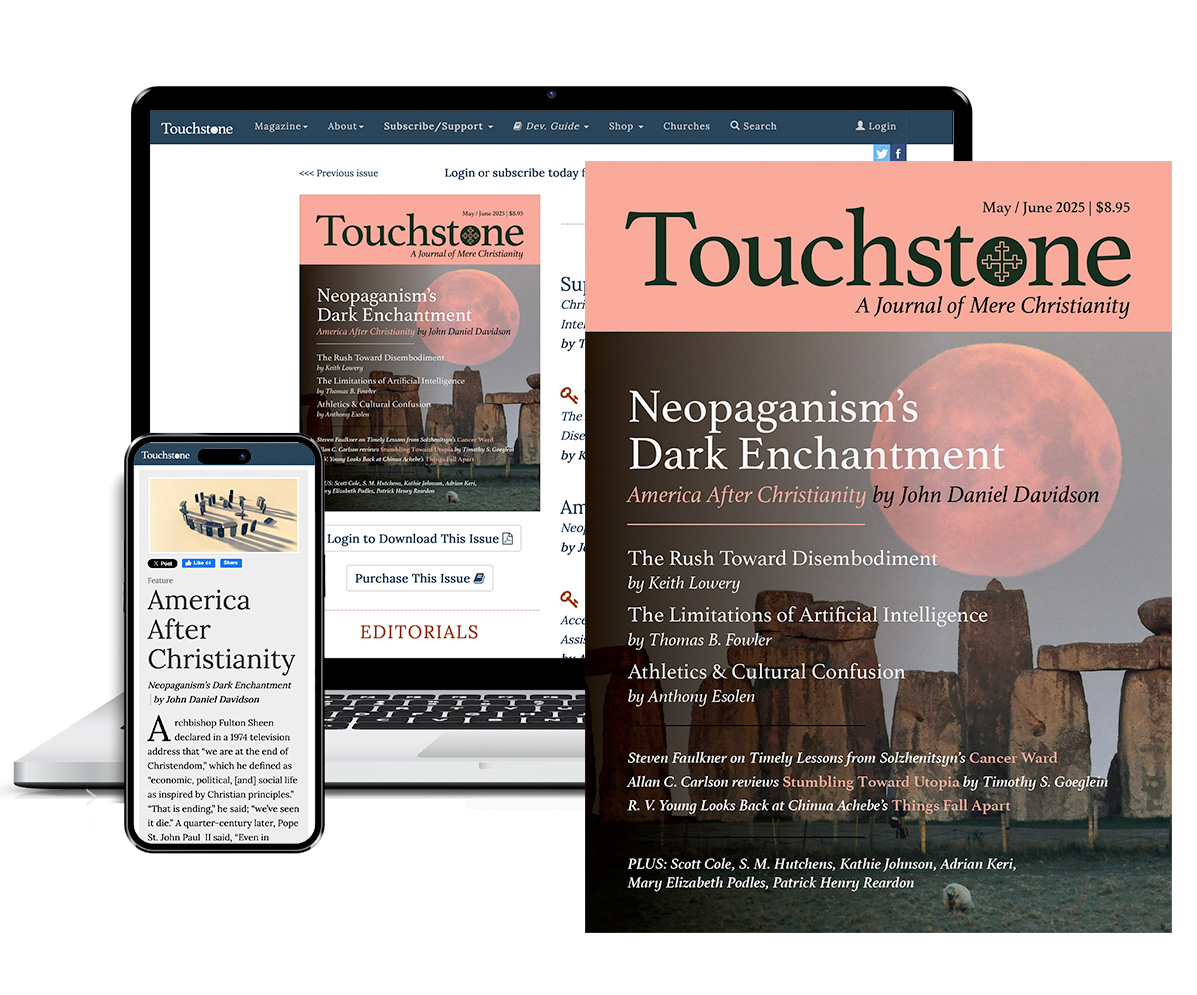
Get six issues (one year) of Touchstone PLUS full online access including pdf downloads for only $39.95. That's only $3.34 per month!
Order
Online Only
Subscription

Get a one-year full-access subscription to the Touchstone online archives for only $19.95. That's only $1.66 per month!
bulk subscriptions
Order Touchstone subscriptions in bulk and save $10 per sub! Each subscription includes 6 issues of Touchstone plus full online access to touchstonemag.com—including archives, videos, and pdf downloads of recent issues for only $29.95 each! Great for churches or study groups.
Transactions will be processed on a secure server.
more on america from the online archives
more from the online archives
calling all readers
Please Donate
"There are magazines worth reading but few worth saving . . . Touchstone is just such a magazine."
—Alice von Hildebrand
"Here we do not concede one square millimeter of territory to falsehood, folly, contemporary sentimentality, or fashion. We speak the truth, and let God be our judge. . . . Touchstone is the one committedly Christian conservative journal."
—Anthony Esolen, Touchstone senior editor



